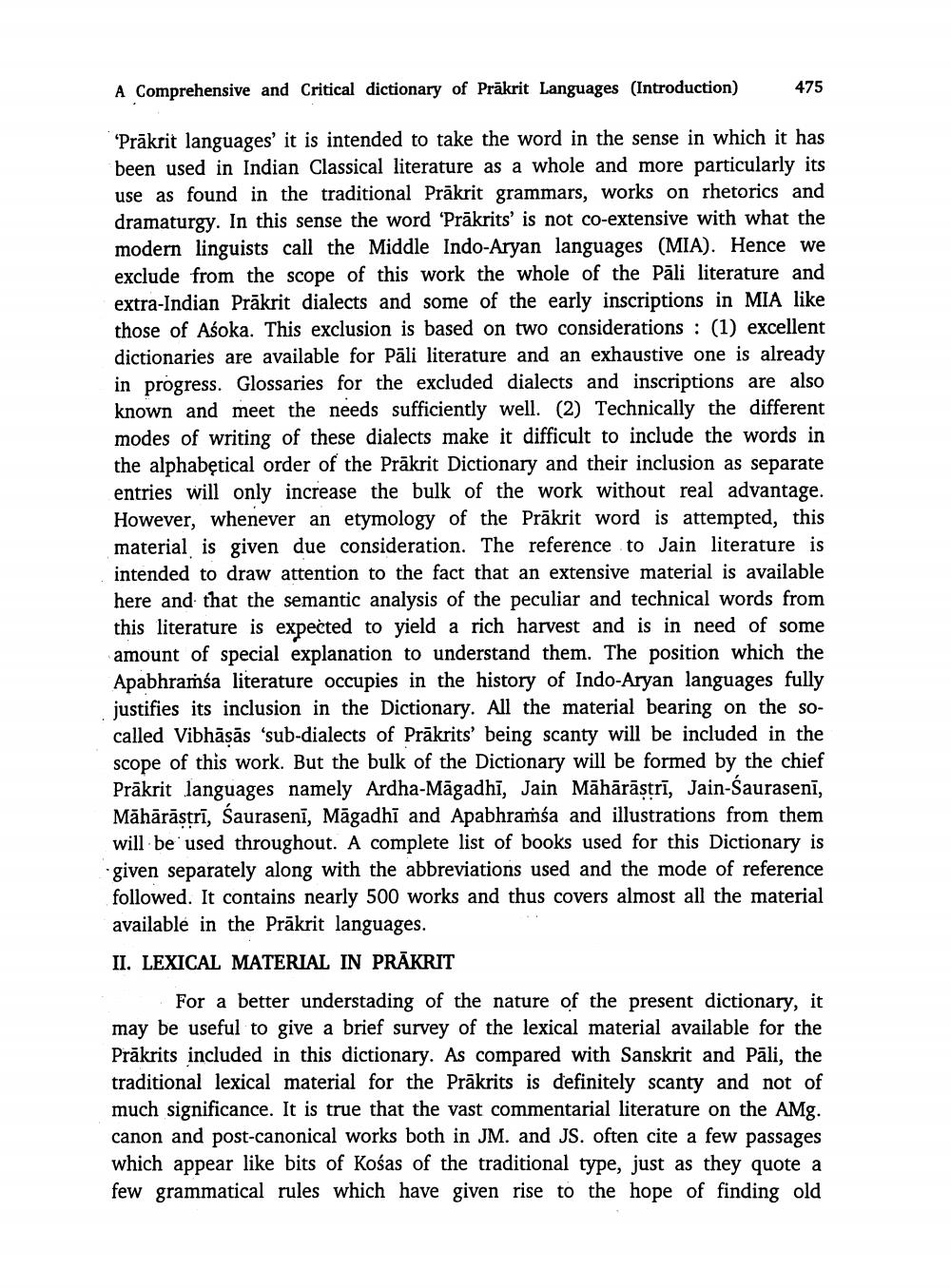________________
475
A Comprehensive and Critical dictionary of Prakrit Languages (Introduction)
Präkrit languages' it is intended to take the word in the sense in which it has been used in Indian Classical literature as a whole and more particularly its use as found in the traditional Präkrit grammars, works on rhetorics and dramaturgy. In this sense the word 'Präkrits' is not co-extensive with what the modern linguists call the Middle Indo-Aryan languages (MIA). Hence we exclude from the scope of this work the whole of the Päli literature and extra-Indian Prakrit dialects and some of the early inscriptions in MIA like those of Aśoka. This exclusion is based on two considerations: (1) excellent dictionaries are available for Päli literature and an exhaustive one is already in progress. Glossaries for the excluded dialects and inscriptions are also known and meet the needs sufficiently well. (2) Technically the different modes of writing of these dialects make it difficult to include the words in the alphabetical order of the Prakrit Dictionary and their inclusion as separate entries will only increase the bulk of the work without real advantage. However, whenever an etymology of the Prakrit word is attempted, this material is given due consideration. The reference to Jain literature is intended to draw attention to the fact that an extensive material is available. here and that the semantic analysis of the peculiar and technical words from this literature is expected to yield a rich harvest and is in need of some amount of special explanation to understand them. The position which the Apabhramsa literature occupies in the history of Indo-Aryan languages fully justifies its inclusion in the Dictionary. All the material bearing on the socalled Vibhāṣās 'sub-dialects of Präkrits' being scanty will be included in the scope of this work. But the bulk of the Dictionary will be formed by the chief Prakrit languages namely Ardha-Mägadhi, Jain Mähärästri, Jain-Sauraseni, Mähärästri, Sauraseni, Mägadhi and Apabhramsa and illustrations from them will be used throughout. A complete list of books used for this Dictionary is given separately along with the abbreviations used and the mode of reference followed. It contains nearly 500 works and thus covers almost all the material available in the Präkrit languages.
II. LEXICAL MATERIAL IN PRÅKRIT
For a better understading of the nature of the present dictionary, it may be useful to give a brief survey of the lexical material available for the Prakrits included in this dictionary. As compared with Sanskrit and Pāli, the traditional lexical material for the Prakrits is definitely scanty and not of much significance. It is true that the vast commentarial literature on the AMg. canon and post-canonical works both in JM. and JS. often cite a few passages which appear like bits of Kosas of the traditional type, just as they quote a few grammatical rules which have given rise to the hope of finding old




